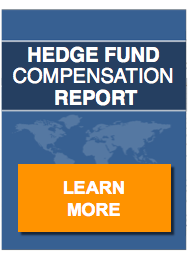Hedge fund assets under management (AUM) reached $3.58 trillion at the close of 2017, according to the most recent data from Prequin, and the cash keeps rolling in, with more than $14 billion in positive inflow for the month of January. This the strongest annual start for hedge funds since the financial crisis and the only January exhibiting positive inflows since 2014.
An Incredible Turn-Around
Net negative outflows of more than $110 billion occurred in 2016. In 2017, the industry saw net positive inflows in each of four quarters, culminating in a net asset gain of $44.4 billion. If January 2018 is any indication of things to come, the year will be an extraordinary one for the hedge fund industry.
Factors that Promise to Sustain This Trend
First, according to Prequin, in December 2017 investor interviews, 45 percent of their respondents held the view that the markets had peaked. Holding such a view means that 45 percent believe the market will turn bearish and/or will suffer increased volatility. This favors hedge fund investment.
Second, Prequin’s analysis of asset flows based upon 2016 performance demonstrated that inflows were positive in firms with gains of 5 percent or greater. Given aggregate 2017, industry gains in excess of 8 percent; it is reasonable to anticipate industry-wide positive inflows.
Third, Prequin’s December 2017 investor interviews revealed that 46 percent of respondents planned to maintain current levels of hedge fund investment while 27 percent reported plans to increase allocations to hedge funds—the strongest response since 2013.
Strategies under Pressure
A pair of hedge fund strategies saw negative flows despite the overall positive January result industry-wide. Those strategies are event-driven and multi-strategy, both of which saw gains above 2 percent in January.
Favored Strategies Based Upon Inflows
Macro strategies were the strongest draw for investment dollars in January, pulling in $6.87 billion and according to eVestment, it was also one of the top performing strategies in January, gaining 3.53 percent.
Directional credit attracted $3.62 billion. However, this strategy only showed a gain of 0.56 percent in January.
Long/short equity strategies raked in $4.16 billion in January, while returning 2.71 percent.
Final Thoughts
Positive asset flows were the hallmark of January’s industry results, but many funds suffered from the market volatility of early January. It is almost certain that February results will reveal that many more funds were battered by the extraordinary market fluctuations experienced in February. However, it is almost certain that investors will take an increasingly defensive posture with respect to their portfolios and far fewer will take an aggressive stance.
Others are sitting on the sidelines, waiting to see what happens with the interest rates at the March FOMC meeting under its new leader, Jerome (Jay) Powell. Many were surprised to see Powell’s reaction (or lack thereof) to the 1179 point plummet in a single day.
The absence of a reaction by Chairman Powell may speak volumes. Is it possible that we will see less interference in the economy under his leadership? Only time will tell.


